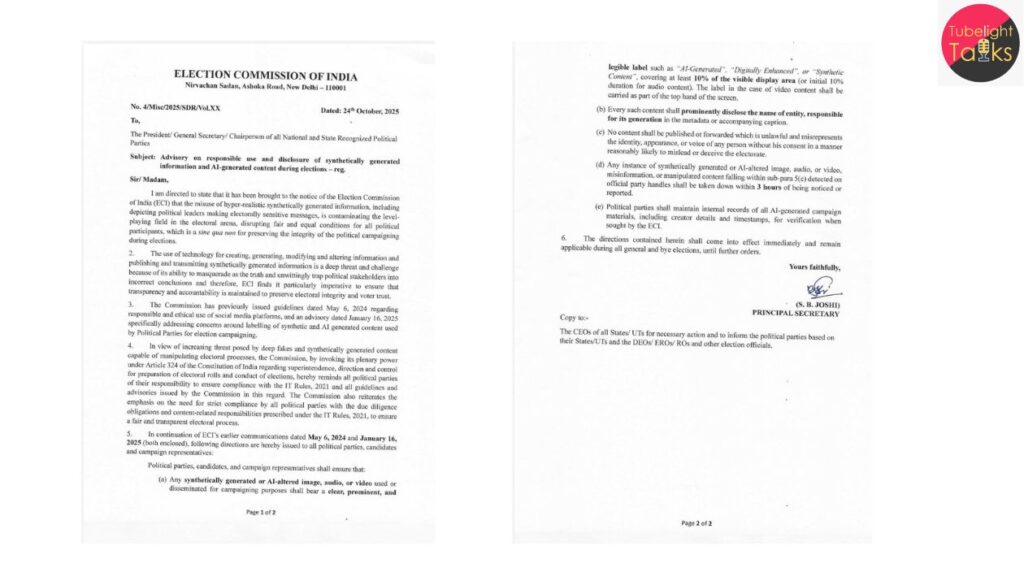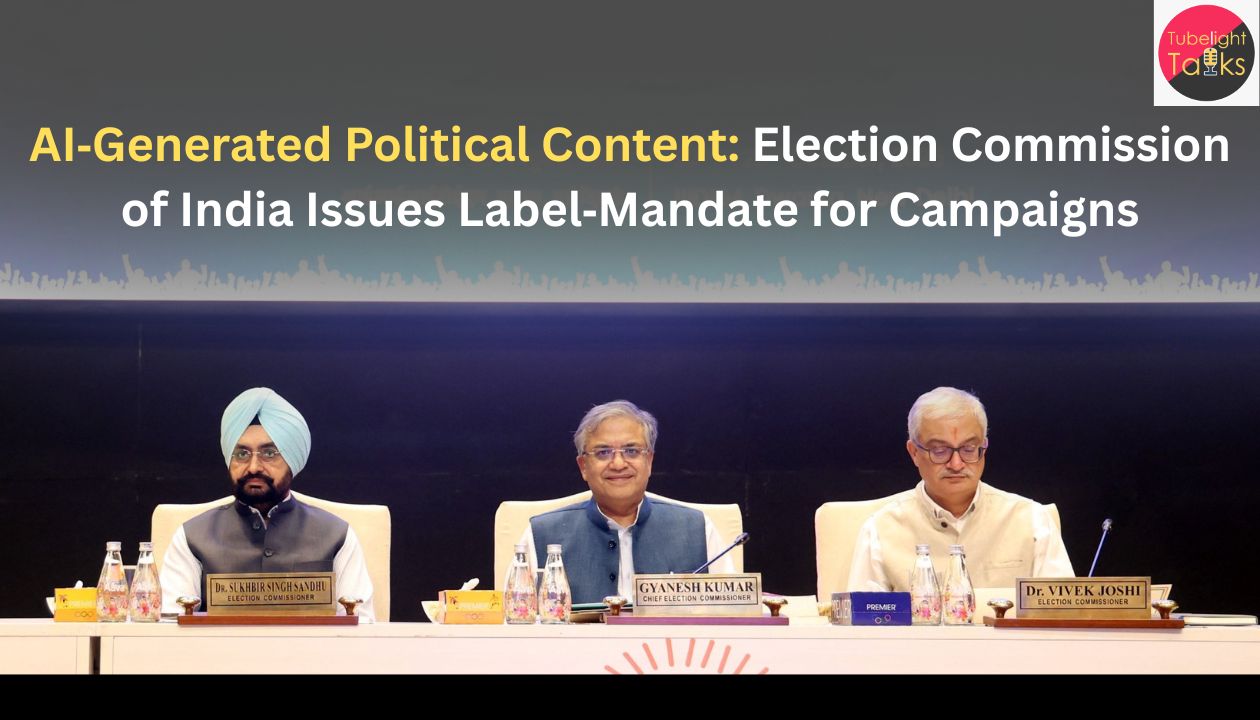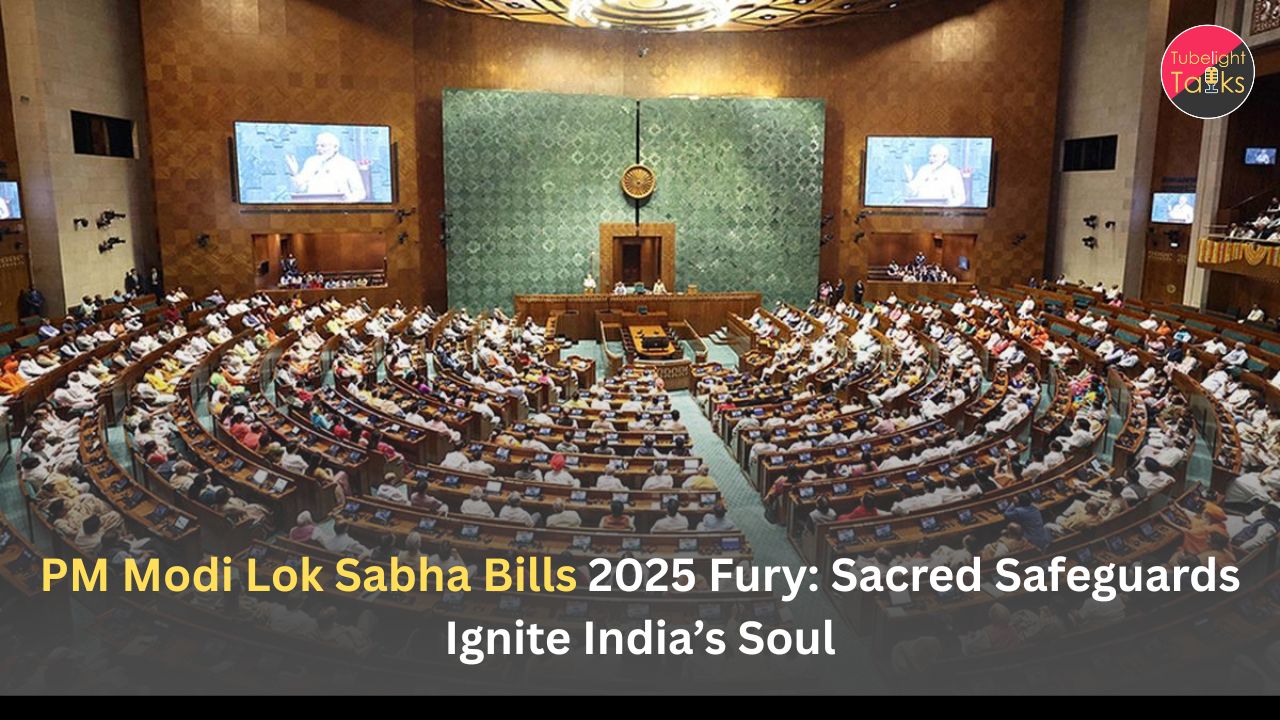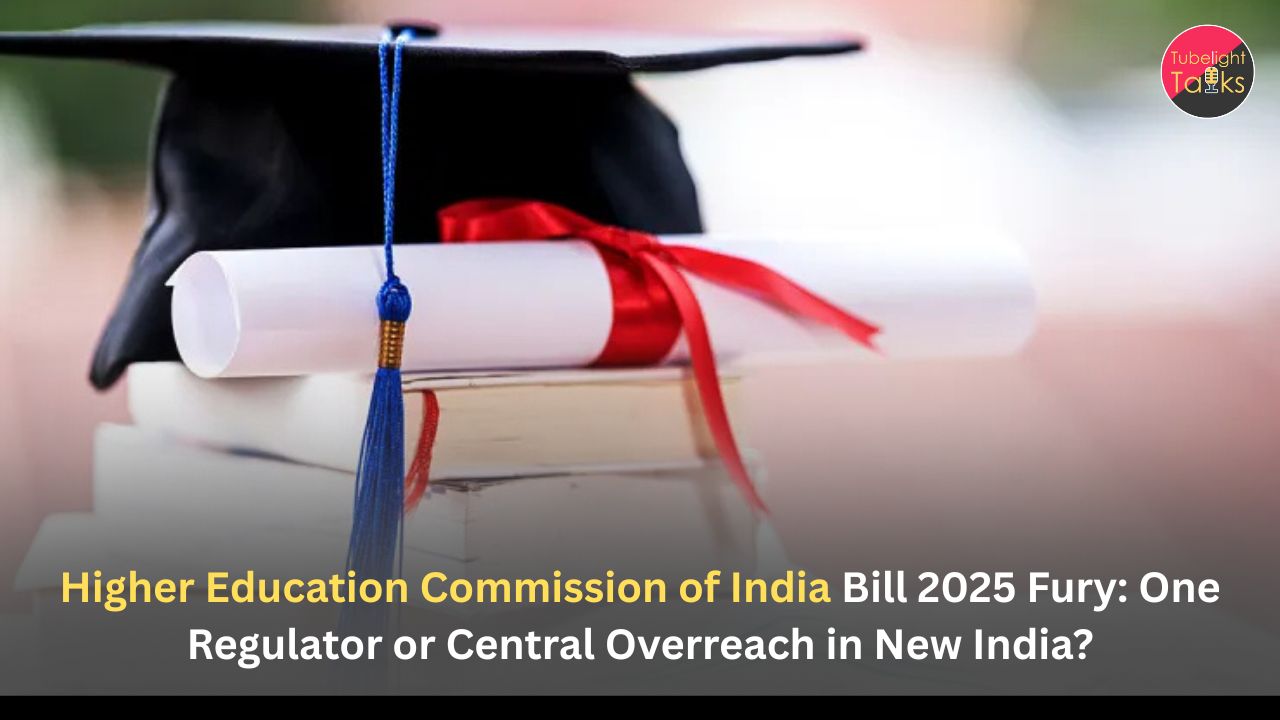AI Generated Political Content: In the run‑up to the next election cycle, the Election Commission of India (ECI) has aggressively moved to regulate the increasingly potent challenge posed by synthetic media, deep‑fakes and AI‑generated content. On 25 October 2025, the Commission formalised its directive that any election‑campaign content created or significantly altered by artificial intelligence tools must be clearly labelled.
What the Directive Requires
Scope & Label Requirements
The directive stipulates that images, video or audio used in election advertising—even if modified—must bear the label “AI‑generated”, “Digitally Enhanced” or “Synthetic Content”. The label must occupy at least 10 % of the visual area (or the first 10 % of audio/video play‑time) and identify the entity that created or altered the content.

Applicability & Timing
The rule applies to political parties, candidates, star campaigners and their agencies. It covers social media posts, display‑ads, broadcast content and campaign‑advertising online. While advisory rules existed earlier, this directive is binding during the election‑period.
Why It Matters
Rising AI Influence in Elections
AI‑tools now allow the creation of highly realistic manipulated media—audio, video or images—that can influence public opinion, distort facts or impersonate public figures. Editors estimate India, with nearly a billion internet users, is particularly vulnerable.
Safeguarding Electoral Integrity
Transparency in campaign content helps protect voters’ rights to know the provenance and authenticity of what they see. The ECI views the labelling requirement as a guard‑rail against deceptive strategies.
Global Precedent
India’s rule—with explicit quantifiable thresholds (10 % of area or duration)—is among the first of its kind globally. Analysts say this could become a blueprint for other democracies.
Implementation Challenges for AI Generated Political Content
Enforcement Mechanisms
Ensuring compliance depends on platform cooperation, monitoring, audits and penalty mechanisms. Platforms must integrate detection systems and parties must self‑declare.
Definitional Ambiguity
Determining what qualifies as “synthetic content” or “digitally enhanced” remains complex. Will minor edits count? The guidelines attempt to clarify, but grey‑zones may persist.
Impact on Campaign Strategies
Parties may shift to influence tactics that hover just outside the labelling threshold. Also, resource‑constrained regional parties may find compliance burdensome.
Read also: The Importance of Election Manifestos: A Guide to Understanding Their Significance
A Spiritual Lens on Media & Democracy
In an era where information flows at lightning speed and technology reshapes narratives, the teachings of Sant Rampal Ji Maharaj offer a salient reminder: true communication respects truth, serves society and uplifts human dignity—not merely manipulates emotion or perception. As Indian elections embrace AI regulation, the ethical dimension is as important as the technical. Transparency, accountability and respect for citizen‑agency become not only political tools but moral imperatives.
Looking Ahead
Monitoring & Reporting
Watch for how many campaign‑ads get flagged for improper labelling, how platforms respond, and how quickly errors are corrected.
Policy Evolution
Will the rules evolve into a full regulatory framework governing AI content broadly—for elections and beyond?
Public‑Media Engagement
Will civic‑society and fact‑checkers use the labelling regime to build public awareness and empower voters to question media authenticity?
FAQs: Indian Election Content Labelling Directive
Q1. What exactly must be labelled?
Any image, video or audio used for election campaigning that is created or significantly altered by AI must be labelled “AI‑generated”, “Digitally Enhanced” or “Synthetic Content.”
Q2. Who must comply with the directive?
All national/state‑recognised political parties, individual candidates, star campaigners and agencies working for them.
Q3. What are the technical thresholds?
The label must occupy at least 10 % of the visual frame or the first 10 % of the audio‑video duration, and identify the entity behind the content.
Q4. Why was the rule introduced now?
Because of the accelerating use of AI and deep‑fakes in politics, which threaten voter trust and election fairness.
Q5. Will there be penalties for non‑compliance?
The directive sets out compliance obligations; enforcement mechanisms and penalties are expected in follow‑up regulations or guidelines.










